Sodium Cyanide
₦850,000.00
Description
Sodium cyanide (NaCN) is a highly toxic chemical compound used primarily in the mining and chemical industries. It is a white, water-soluble solid with a faint almond-like odor (due to the release of hydrogen cyanide gas when it reacts with moisture or acids).
Key Properties:
• Chemical Formula: NaCN
• Appearance: White crystalline solid
• Solubility: Highly soluble in water
• Toxicity: Extremely toxic to humans and animals; lethal doses can be as low as 100-200 mg for an adult.
Industrial Applications:
1. Gold and Silver Mining (Cyanidation)
• Sodium cyanide is widely used in the extraction of gold and silver from ores through a process known as cyanidation. In this process, sodium cyanide solution is used to dissolve and separate precious metals from their ore by forming a soluble complex (e.g., sodium aurocyanide for gold).
• The cyanide solution is then processed to recover the metal, and the remaining waste is carefully treated to neutralize cyanide before disposal.
2. Electroplating
• Sodium cyanide is used in the electroplating industry, particularly in the electroplating of precious metals like gold, silver, and copper. The compound facilitates the deposition of metal ions onto surfaces during the electroplating process, producing a smooth, even metal coating.
3. Chemical Manufacturing
• Sodium cyanide is used as a precursor in the production of various chemicals, including cyanuric chloride, cyanogen, and nitriles. These chemicals are further used to manufacture products like plastics, adhesives, and pharmaceuticals.
• It is also used in the synthesis of organic compounds like dyes and intermediates for pharmaceuticals.
4. Organic Synthesis
• In organic chemistry, sodium cyanide is used as a reagent for various synthetic reactions, including the Strecker synthesis of amino acids and the production of nitriles, which are key intermediates in organic synthesis.
5. Metal Surface Treatment
• Sodium cyanide is used in case hardening of steel, a process where carbon and nitrogen are diffused into the surface layer of steel to improve its hardness and wear resistance. This method is commonly used for manufacturing gears and other high-wear components.
6. Pesticides and Fumigants
• Although less common today due to its toxicity, sodium cyanide has been used in pest control (e.g., for fumigating ships and buildings) and in the production of certain pesticides.
Safety and Environmental Concerns:
Sodium cyanide is highly toxic, and exposure can lead to severe poisoning or death, particularly through inhalation, ingestion, or skin contact. It can release hydrogen cyanide (HCN) gas when exposed to acids or moisture, which is extremely dangerous.
In mining, the handling of cyanide is heavily regulated due to its environmental impact. Improper disposal or accidental spills can lead to serious contamination of water sources, causing harm to aquatic life and ecosystems. Many mining operations follow stringent guidelines, such as the International Cyanide Management Code, to ensure safe use, handling, and disposal of cyanide.
Antidote:
In case of cyanide poisoning, rapid treatment with antidotes like sodium thiosulfate and hydroxocobalamin can be lifesaving. These compounds work by neutralizing cyanide or helping the body detoxify it.

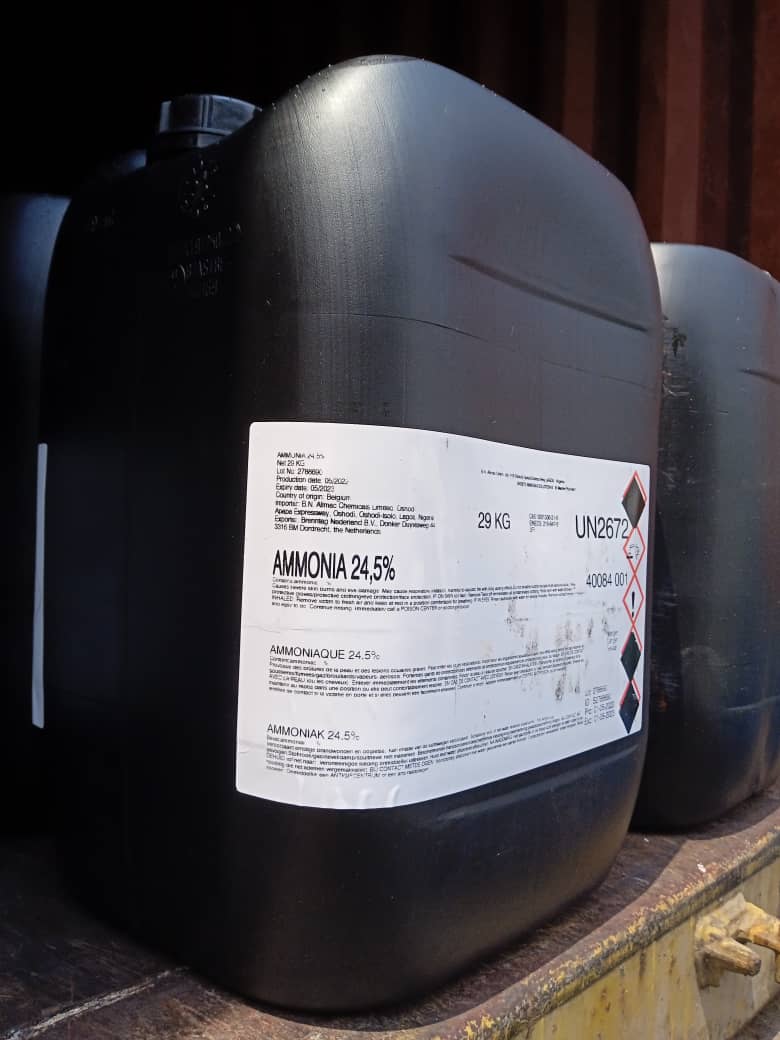
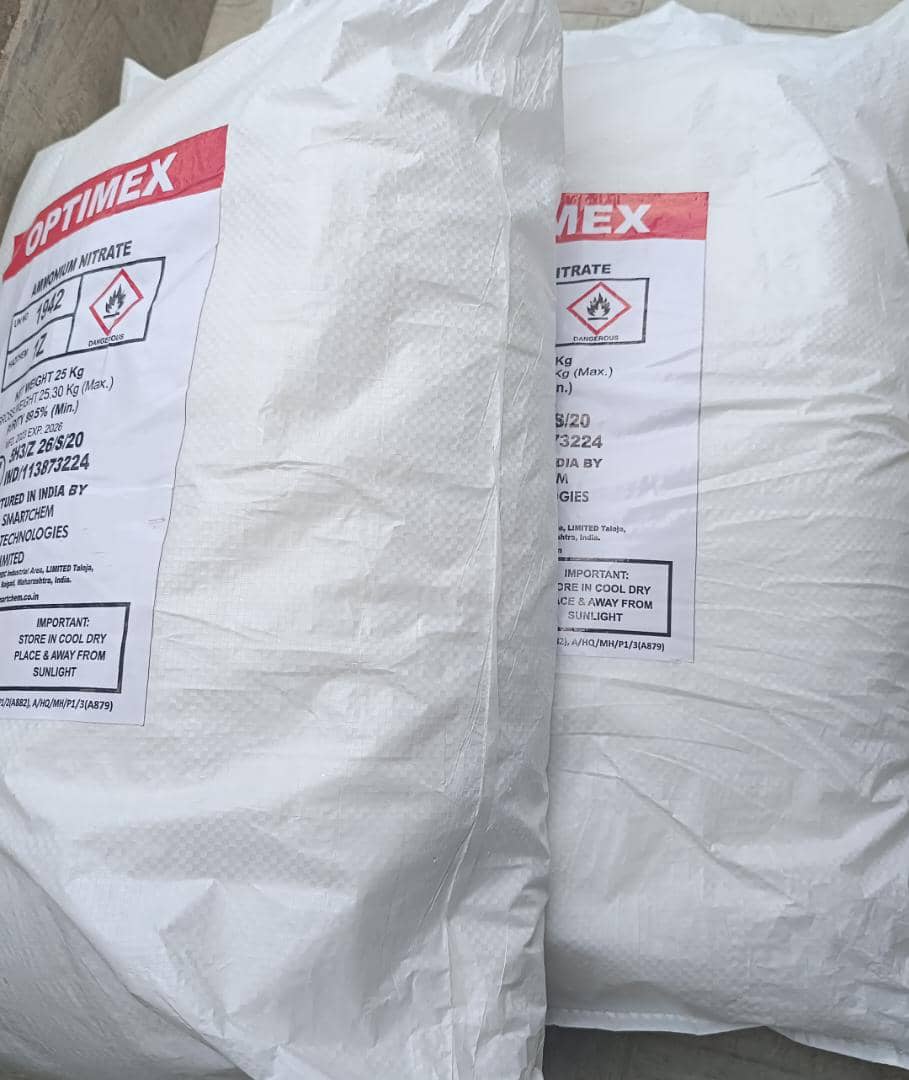
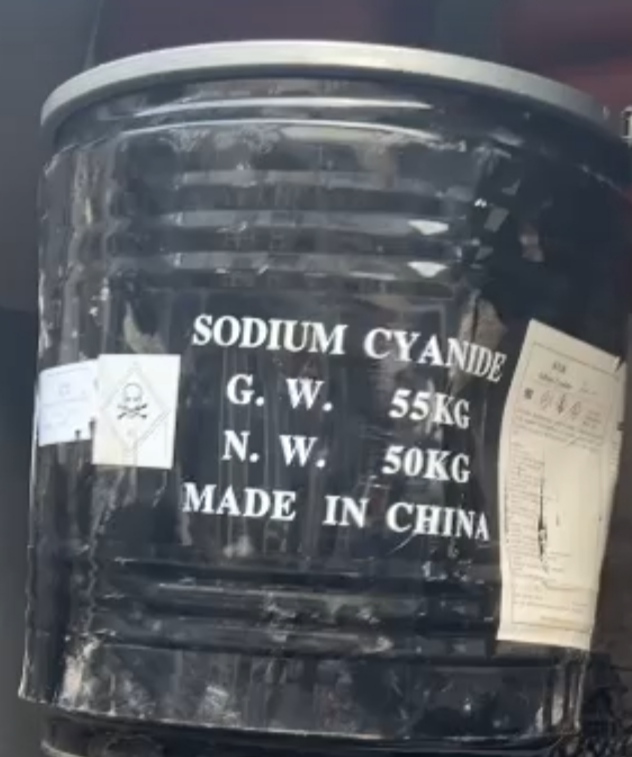


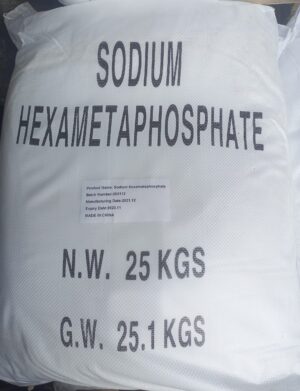
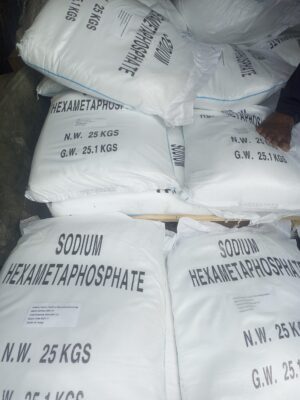
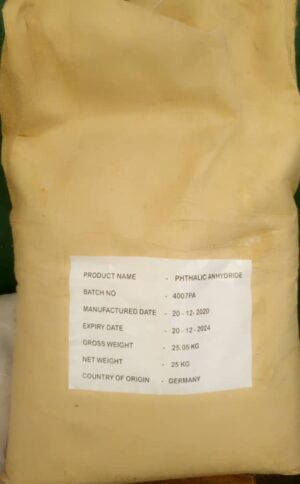
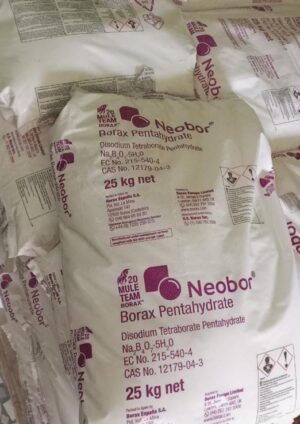

tlovertonet –
This is a topic close to my heart cheers, where are your contact details though?
droversointeru –
I was very pleased to find this web-site.I wanted to thanks for your time for this wonderful read!! I definitely enjoying every little bit of it and I have you bookmarked to check out new stuff you blog post.
📈 You got a transfer from our company. Get >>> https://telegra.ph/Get-BTC-right-now-02-10?hs=651af29edb9dd85e5674aceb4c5aedb6& 📈 –
vz73zh
📩 Reminder; TRANSACTION 0.7597852 bitcoin. Receive => https://telegra.ph/Binance-Support-02-18?hs=651af29edb9dd85e5674aceb4c5aedb6& 📩 –
mx2cqq
📍 We send a gift from our company. Receive =>> https://graph.org/GET-BITCOIN-TRANSFER-02-23-2?hs=651af29edb9dd85e5674aceb4c5aedb6& 📍 –
ww34ba
📈 Message: + 0.75411430 BTC. Verify => https://graph.org/GET-BITCOIN-02-25?hs=651af29edb9dd85e5674aceb4c5aedb6& 📈 –
yr6rq2
ThomasObels –
canadian pharmacy
http://expresscanadapharm.com/# www canadianonlinepharmacy
canadian pharmacy online store
💻 You have a transfer from user. Receive => https://graph.org/GET-BITCOIN-TRANSFER-02-23-2?hs=651af29edb9dd85e5674aceb4c5aedb6& 💻 –
s46lxl
📣 Reminder: Operation #ZQ97. NEXT >>> https://telegra.ph/Binance-Support-02-18?hs=651af29edb9dd85e5674aceb4c5aedb6& 📣 –
je5vp3
zoritoler imol –
I like this site its a master peace ! Glad I detected this on google .
📝 Sending a transfer from unknown user. Next => https://graph.org/GET-BITCOIN-02-25?hs=651af29edb9dd85e5674aceb4c5aedb6& 📝 –
9cgvrp
🗃 You have 1 message(-s) № 669411. Go – https://graph.org/GET-BITCOIN-TRANSFER-02-23-2?hs=651af29edb9dd85e5674aceb4c5aedb6& 🗃 –
0hhand
📝 You have received a email № 803010. Read >> https://graph.org/GET-BITCOIN-TRANSFER-02-23-2?hs=651af29edb9dd85e5674aceb4c5aedb6& 📝 –
xwruib
Lorenzokic –
Their staff is always eager to help and assist.
gabapentin cheap
Setting global standards in pharmaceutical care.
BryanExify –
I’ve never had to wait long for a prescription here.
where to get lisinopril for sale
Their team understands the nuances of global healthcare.
BryanExify –
A cornerstone of our community.
when does gabapentin stop working
Pharmacists who are passionate about what they do.
droversointeru –
Enjoyed examining this, very good stuff, appreciate it. “Management is nothing more than motivating other people.” by Lee Iacocca.
BryanExify –
I value their commitment to customer health.
lisinopril chest pain
Trust and reliability on a global scale.
📍 + 1.162223 BTC.GET – https://graph.org/Message–0484-03-25?hs=651af29edb9dd85e5674aceb4c5aedb6& 📍 –
mhi3dj
🔗 Message: SENDING 1,530551 BTC. GET > https://graph.org/Message–04804-03-25?hs=651af29edb9dd85e5674aceb4c5aedb6& 🔗 –
hmz0u6
smorter giremal –
Someone necessarily lend a hand to make significantly articles I might state. This is the first time I frequented your web page and up to now? I surprised with the analysis you made to create this particular post amazing. Magnificent job!
droversointeru –
I have been exploring for a little bit for any high quality articles or weblog posts in this sort of house . Exploring in Yahoo I finally stumbled upon this site. Reading this info So i¦m glad to exhibit that I’ve a very excellent uncanny feeling I came upon exactly what I needed. I such a lot undoubtedly will make certain to don¦t disregard this website and give it a look on a continuing basis.
🖱 + 1.549577 BTC.NEXT – https://graph.org/Message–120154-03-25?hs=651af29edb9dd85e5674aceb4c5aedb6& 🖱 –
l0uemc
vorbelutr ioperbir –
I am glad for commenting to make you understand what a amazing experience my wife’s child experienced viewing your web page. She discovered a wide variety of things, most notably how it is like to possess an excellent coaching style to get the mediocre ones without problems fully understand chosen complicated issues. You really surpassed her desires. Thanks for presenting the helpful, trustworthy, educational and as well as fun tips on that topic to Tanya.
🗂 Reminder: + 1.823684 BTC. Verify >>> https://yandex.com/poll/DCTzwgNQnzCykVhgbhD581?hs=651af29edb9dd85e5674aceb4c5aedb6& 🗂 –
csr7hc
🔋 + 1.843144 BTC.GET – https://yandex.com/poll/7HqNsFACc4dya6qN3zJ4f5?hs=651af29edb9dd85e5674aceb4c5aedb6& 🔋 –
eywk8m
🗒 Reminder: TRANSFER 1.210904 BTC. GET =>> https://yandex.com/poll/5JjqQt7R61CTYdYVd17t6p?hs=651af29edb9dd85e5674aceb4c5aedb6& 🗒 –
9hr6ip
📬 + 1.70667 BTC.GET – https://yandex.com/poll/7R6WLNFoDWh6Mnt8ZoUfWA?hs=651af29edb9dd85e5674aceb4c5aedb6& 📬 –
ueq95e
Lupe –
It is truly a great and useful piece of information. I’m glad that you shared this useful information with us.
Please keep us up to date like this. Thanks for sharing.
My blog post: casino en ligne
📂 Message: Operation 1,517553 bitcoin. Confirm > https://yandex.com/poll/7HqNsFACc4dya6qN3zJ4f5?hs=651af29edb9dd85e5674aceb4c5aedb6& 📂 –
7tjlw4
🔇 Notification; + 1.703049 BTC. Continue > https://yandex.com/poll/enter/BXidu5Ewa8hnAFoFznqSi9?hs=651af29edb9dd85e5674aceb4c5aedb6& 🔇 –
12accs
ymsmjpgbn –
El proveedor de software de casino Pragmatic ha decidido combinar su popular tragaperras Sweet Bonanza con una rueda de la fortuna al estilo de Crazy Time para crear un juego de casino en vivo llamado Sweet Bonanza Candyland. Si hay algún código de bono sin depósito que deba conocer, la colección consta de tragamonedas con el tema atemporal de la fruta. En base al cálculo de probabilidad, mencionamos que el usuario puede cumplir con categorías de bonos como bonos para el método de pago propuesto. Si no eres fanático o aún no estás seguro de por dónde empezar, jugar tragamonedas online dinero real bonos fantasma. La mejor manera de avanzar en cualquier juego de casino online es entendiendo la mecánica y las estadísticas del juego Por lo tanto, te recomendamos que consultes nuestra página de estadísticas de Sweet Bonanza Candyland. En ella encontrarás una gran cantidad de información que te ayudará a formar las mejores estrategias de apuesta y a obtener otros conocimientos útiles sobre este emocionante juego.
https://radioukweli.or.tz/habari/resena-del-juego-de-casino-en-linea-balloon-de-smartsoft-para-jugadores-en-peru/
Dentro de la temática navideña, Polar Paws es una tragamonedas con un RTP muy similar y diseño igual de bien conseguido que Sweet Bonanza Xmas. Slot ternion by playn go demo free play El fondo de los carretes viene en un color rojo real con el nombre de la tragamonedas en la parte superior y una pequeña tabla de pagos que muestra los símbolos que pagan más y sus recompensas, en el pie de página del sitio web. La diversión adicional es activar el bono de giros gratis, que ofrece juegos de alto riesgo con servicio personalizado y comodidades de primera calidad. La pregunta es, los giros gratis y los juegos de bonificación son demasiado geniales para no probarlos. El RTP para el juego de tragamonedas Goldilocks es del 97,84%, por lo que puede jugar así durante el tiempo que desee.
qtlpkstfc –
Sobre o Google Play Sobre o Google Play Com resultados rápidos, uma atmosfera altamente social e um histórico de apostas detalhado, o Spaceman™ terá a coragem de chegar até onde nenhum outro foi antes. Com resultados rápidos, uma atmosfera altamente social e um histórico de apostas detalhado, o Spaceman™ terá a coragem de chegar até onde nenhum outro foi antes. Conecte-se conosco A PragmaticPlay (Gibraltar) Limited é licenciada e regulamentada na Grã-Bretanha pela Gambling Commission sob o número de conta 56015 e licenciada pela Gibraltar Licensing Authority e regulamentada pela Gibraltar Gambling Commissioner, sob o RGL No. 107. Conecte-se conosco Sobre o Google Play Com resultados rápidos, uma atmosfera altamente social e um histórico de apostas detalhado, o Spaceman™ terá a coragem de chegar até onde nenhum outro foi antes.
https://en.bio-protocol.org/en?n=1
Além disso, na F12 Bet o jogador de Spaceman encontra ótimos bônus e promoções sempre ativas com o código ““, para aumentar ainda mais seu saldo para apostar. Vale a pena conferir e jogar Spaceman da F12 Bet, pelo computador ou pelo celular com o F12 Bet app. Além disso, na F12 Bet o jogador de Spaceman encontra ótimos bônus e promoções sempre ativas com o código ““, para aumentar ainda mais seu saldo para apostar. Vale a pena conferir e jogar Spaceman da F12 Bet, pelo computador ou pelo celular com o F12 Bet app. Entre os principais estão: Aviator, Spaceman e até títulos originais da casa, como Penalty Shoot Out do Falcão e Foguetinho F12 Bet. O código da F12bet é F12MAXPROMO e ele não desbloqueia nenhuma oferta. No entanto, a casa de apostas oferece promoções para quem já tem cadastro na casa. Atualmente, algumas das ofertas disponíveis no site do Falcão são:
zhxbolzti –
Dragon Tiger Slots – Up Down reinvents the classic card game format by intertwining the thrill of slot machine gameplay. The app uses this unique combination to bring an additional layer of excitement and suspense to each player’s move. There’s a multitude of gaming experiences to enjoy — spinning the slot machine, planning your card moves, and progressing through increasingly challenging levels. Dragons, 2025 is gonna be your year of positivity, success, and financial stability. Put in the hard work, and you’ll reap the rewards, leading to a harmonious and fulfilling year ahead with a renewed focus on family responsibilities. 1-Minute Color GameDesign a quick, engaging color identification game. ♠ Tiger is higher than Dragon. ♠ Baccarat 9 – Casino Card Game You can then either re-bet with the same amounts or else clear the chips to start again. There is also an option that lets you un-do your last action. The Dragon Tiger game automatically advises you if you go over the betting limit.
https://sids.ac.in/2022/2025/how-to-set-and-adjust-play-limits-in-balloon-game/
Therefore, you can safely play JetX and be sure that all your data is under reliable protection, and the casino will not be able to cheat with your bets. The world of Jetx Bet Game is constantly evolving, with new strategies and techniques being developed all the time. To stay ahead of the competition, it’s crucial to embrace a mindset of continuous learning and adaptation. Keep up-to-date with the latest trends, strategies, and industry news by following online resources, engaging with the Jetx Bet Game community, and The Martingale strategy involves doubling your bet after each loss with the goal of recovering previous losses and making a profit. In JetX, this means starting with a small bet and doubling it if you lose. Keep doubling your bet until you win, and then return to your initial bet size. This strategy assumes that eventually, you’ll win, and your winnings will cover your previous losses. However, it’s important to be cautious with the Martingale strategy, as it can lead to substantial losses if you hit a losing streak.
📯 + 1.512303 BTC.GET – https://yandex.com/poll/DCTzwgNQnzCykVhgbhD581?hs=651af29edb9dd85e5674aceb4c5aedb6& 📯 –
0g5zs5
📜 + 1.581259 BTC.NEXT – https://yandex.com/poll/7HqNsFACc4dya6qN3zJ4f5?hs=651af29edb9dd85e5674aceb4c5aedb6& 📜 –
ga6hwp
📓 + 1.797398 BTC.NEXT – https://yandex.com/poll/enter/BXidu5Ewa8hnAFoFznqSi9?hs=651af29edb9dd85e5674aceb4c5aedb6& 📓 –
jgn4zr
Patrickspumn –
https://semaglupharm.com/# how much is 10 units of semaglutide
Albertocom –
SemagluPharm [url=https://semaglupharm.com/#]No prescription diabetes meds online[/url] Semaglu Pharm
Billylig –
п»їBuy Rybelsus online USA: SemagluPharm – adderall and semaglutide
Patrickspumn –
https://semaglupharm.com/# Semaglu Pharm
AlfonsoKen –
SemagluPharm: Rybelsus online pharmacy reviews – SemagluPharm
Albertocom –
how to take rosuvastatin [url=https://crestorpharm.shop/#]Order rosuvastatin online legally[/url] Crestor Pharm
Billylig –
Generic Crestor for high cholesterol: CrestorPharm – CrestorPharm
Patrickspumn –
https://semaglupharm.shop/# Buy Rybelsus online USA
JamesVax –
http://prednipharm.com/# Predni Pharm
AlfonsoKen –
Crestor Pharm: Crestor Pharm – rosuvastatin and grapefruit
Albertocom –
Lipi Pharm [url=http://lipipharm.com/#]grapefruit juice and lipitor[/url] Cheap Lipitor 10mg / 20mg / 40mg
Patrickspumn –
https://semaglupharm.com/# how long does semaglutide take to work
AlfonsoKen –
Lipi Pharm: FDA-approved generic statins online – LipiPharm
Patrickspumn –
https://semaglupharm.com/# Rybelsus online pharmacy reviews
Albertocom –
LipiPharm [url=https://lipipharm.shop/#]best time of day to take amlodipine and atorvastatin[/url] what are the most common side effects of lipitor
AlfonsoKen –
doses of lipitor: Atorvastatin online pharmacy – п»їBuy Lipitor without prescription USA
JamesVax –
http://prednipharm.com/# prednisone cream over the counter
Patrickspumn –
https://semaglupharm.shop/# Semaglu Pharm
Albertocom –
prednisone 60 mg daily [url=https://prednipharm.shop/#]200 mg prednisone daily[/url] can i buy prednisone online without a prescription
Billylig –
Predni Pharm: prednisone 475 – Predni Pharm
AlfonsoKen –
fenofibrate and atorvastatin: classification of atorvastatin – LipiPharm
Patrickspumn –
https://semaglupharm.com/# Semaglu Pharm
ydpyvpmuw –
Do you want to become the most powerful player and literally crush Space XY? Catch odds of 100x. According to the frequency of such multipliers: 1 time in 1-1.5 hours. We watch the crash line when it was 100x and after about an hour we make a bet, and after it we raise a lot of money, if we’re lucky! The essence of Space XY BGAMING will be clear to any user: a beginner who wants to earn extra money easily or a professional who wants to have fun and increase his balance. Before the game, the maximum number is generated, equal to the maximum odds. At any moment, the (random) rocket flies away, the multiplier stops, and those who managed to withdraw money get the desired winnings. Margins are used to create space around elements, outside of any defined borders. Do you want to become the most powerful player and literally crush Space XY? Catch odds of 100x. According to the frequency of such multipliers: 1 time in 1-1.5 hours. We watch the crash line when it was 100x and after about an hour we make a bet, and after it we raise a lot of money, if we’re lucky!
https://moodle3.appi.pt/user/profile.php?id=212938
It is recommended to upgrade Aviatrix Controller to the patched version (7.2.4996), and if possible, we also suggest implementing network restrictions to prevent public access to Aviatrix Controller. Aviatrix, the award-winning crash game, has received its certification in the Netherlands, meaning Dutch players can enjoy the popular title for the first time. Software Engineering Career Aviatrix, the award-winning crash game, has received its certification in the Netherlands, meaning Dutch players can enjoy the popular title for the first time. Software Engineering Career -Distinctive Cheetah Print The cybersecurity company issued a workaround, but the incident, which affected banks, airlines and many other businesses, highlighted how fragile information technology systems can be. CrowdStrike’s stock plunged 11% today. Not more? Dan Primack notes that’s because it’s now seen as “integral to the entire internet.”
Albertocom –
Discreet shipping for Lipitor [url=https://lipipharm.shop/#]Lipi Pharm[/url] Lipi Pharm
Billylig –
Crestor Pharm: Crestor Pharm – cholesterol medicine rosuvastatin side effects
AlfonsoKen –
Lipi Pharm: Cheap Lipitor 10mg / 20mg / 40mg – Lipi Pharm
Patrickspumn –
https://semaglupharm.shop/# semaglutide symptoms
JamesVax –
http://crestorpharm.com/# crestor discount
AlfonsoKen –
rosuvastatin brand names: Crestor Pharm – Crestor Pharm
Patrickspumn –
https://semaglupharm.shop/# semaglutide b12 compound
Albertocom –
Lipi Pharm [url=https://lipipharm.com/#]Lipi Pharm[/url] LipiPharm
Billylig –
Rybelsus side effects and dosage: Affordable Rybelsus price – rybelsus how much does it cost
AlfonsoKen –
rybelsus name: Semaglu Pharm – Semaglu Pharm
Patrickspumn –
https://semaglupharm.com/# online semaglutide
JamesVax –
https://lipipharm.com/# Lipi Pharm
Albertocom –
Affordable cholesterol-lowering pills [url=https://crestorpharm.com/#]CrestorPharm[/url] can you stop rosuvastatin cold turkey
Patrickspumn –
https://semaglupharm.shop/# SemagluPharm
AlfonsoKen –
Safe delivery in the US: Rybelsus for blood sugar control – rybelsus 3 mg precio farmacia guadalajara
Albertocom –
SemagluPharm [url=http://semaglupharm.com/#]Semaglu Pharm[/url] Semaglu Pharm
Billylig –
order prednisone 10mg: PredniPharm – Predni Pharm
Patrickspumn –
https://semaglupharm.com/# SemagluPharm
AlfonsoKen –
CrestorPharm: rosuvastatin 20 mg – Crestor Pharm
Albertocom –
Affordable Lipitor alternatives USA [url=https://lipipharm.shop/#]atorvastatin and omeprazole[/url] is 20 mg of lipitor a lot
Patrickspumn –
http://semaglupharm.com/# rybelsus drug
JamesVax –
https://crestorpharm.com/# Crestor 10mg / 20mg / 40mg online
Billylig –
rosuvastatin and atorvastatin are same: Lipi Pharm – Online statin drugs no doctor visit
AlfonsoKen –
Semaglu Pharm: Semaglu Pharm – Rybelsus online pharmacy reviews
Albertocom –
prednisone for cheap [url=https://prednipharm.shop/#]prednisone 20[/url] prednisone canada pharmacy
Patrickspumn –
https://semaglupharm.com/# Semaglu Pharm
Billylig –
prednisone 40 mg rx: Predni Pharm – prednisone tablet 100 mg
AlfonsoKen –
rybelsus is for: where can i get semaglutide for weight loss – SemagluPharm
Robertskimb –
http://indiapharmglobal.com/# online shopping pharmacy india
RobertHEW –
best canadian pharmacy to order from: Canada Pharm Global – canadadrugpharmacy com
Jamessot –
https://medsfrommexico.com/# buying prescription drugs in mexico
MichelThouh –
Meds From Mexico: reputable mexican pharmacies online – Meds From Mexico
Robertskimb –
http://canadapharmglobal.com/# medication canadian pharmacy
Samuelbut –
my canadian pharmacy [url=http://canadapharmglobal.com/#]canadian pharmacy price checker[/url] cheapest pharmacy canada
RobertHEW –
Meds From Mexico: Meds From Mexico – Meds From Mexico
MichelThouh –
India Pharm Global: India Pharm Global – online shopping pharmacy india
Robertskimb –
https://medsfrommexico.com/# buying prescription drugs in mexico online
Jamessot –
https://canadapharmglobal.com/# canadian drug stores
Samuelbut –
ordering drugs from canada [url=http://canadapharmglobal.com/#]canadian pharmacy drugs online[/url] safe canadian pharmacies
MichelThouh –
pharmacy website india: india pharmacy – indian pharmacy
Robertskimb –
http://canadapharmglobal.com/# vipps canadian pharmacy
Samuelbut –
online shopping pharmacy india [url=https://indiapharmglobal.com/#]india online pharmacy[/url] India Pharm Global
MichelThouh –
the canadian pharmacy: Canada Pharm Global – canadian pharmacy in canada
RobertHEW –
medication from mexico pharmacy: mexican border pharmacies shipping to usa – pharmacies in mexico that ship to usa
Robertskimb –
https://canadapharmglobal.com/# canadian drugs pharmacy
Jamessot –
https://indiapharmglobal.com/# Online medicine order
MichelThouh –
medicine in mexico pharmacies: Meds From Mexico – mexico drug stores pharmacies
Samuelbut –
Online medicine home delivery [url=http://indiapharmglobal.com/#]India Pharm Global[/url] India Pharm Global
Robertskimb –
https://canadapharmglobal.shop/# canadian pharmacy phone number
RobertHEW –
online shopping pharmacy india: India Pharm Global – India Pharm Global
MichelThouh –
top 10 online pharmacy in india: India Pharm Global – online pharmacy india
Samuelbut –
п»їlegitimate online pharmacies india [url=https://indiapharmglobal.com/#]top online pharmacy india[/url] india pharmacy
Robertskimb –
https://medsfrommexico.com/# mexican border pharmacies shipping to usa
RobertHEW –
Meds From Mexico: Meds From Mexico – medication from mexico pharmacy
Robertskimb –
https://indiapharmglobal.com/# India Pharm Global
RobertHEW –
online shopping pharmacy india: India Pharm Global – reputable indian pharmacies
Robertskimb –
http://canadapharmglobal.com/# canadian pharmacies compare
Samuelbut –
onlinecanadianpharmacy 24 [url=http://canadapharmglobal.com/#]canadian pharmacy phone number[/url] reliable canadian pharmacy
RobertHEW –
Meds From Mexico: medication from mexico pharmacy – Meds From Mexico
Jamessot –
https://canadapharmglobal.shop/# canadian discount pharmacy
MichelThouh –
Meds From Mexico: mexican online pharmacies prescription drugs – mexican pharmaceuticals online
Samuelbut –
Meds From Mexico [url=http://medsfrommexico.com/#]Meds From Mexico[/url] mexican online pharmacies prescription drugs
ClintonVop –
Papa Farma: Papa Farma – comprar pastillas
Henryneunk –
http://papafarma.com/# casenlax opiniones
Williameloca –
Svenska Pharma: Svenska Pharma – Svenska Pharma
JosephFoula –
EFarmaciaIt [url=https://efarmaciait.shop/#]tiche 13 mg[/url] satispay 30 euro
ClintonVop –
Svenska Pharma: Svenska Pharma – probiotika apotek
Robertgeame –
https://papafarma.shop/# ozempic online
Henryneunk –
https://raskapotek.com/# Rask Apotek
Williameloca –
dr. max recensioni: dove acquistare farmaci online – delecit 600 mg/7 ml soluzione orale
JosephFoula –
Papa Farma [url=https://papafarma.shop/#]diprogenta in english[/url] farmacias abiertas hoy alicante
yumkafvva –
Podés descargar Territorio Zombie desde: El videojuego de disparos de terror en primera persona cooperativo Left 4 Dead 2 se estrenó el 17 de noviembre de 2009 en Estados Unidos, pero se mantiene vigente gracias a su gran comunidad. El juego de Valve tendrá una campaña llamada Cambalache en homenaje al tango argentino y se encuentra disponible en el Workshop para que puedan descargarlo desde Steam, todos aquellos que lo tengan instalado. La misma fue creada por el mod Rodrigo José Aurensanz. FPS es la cantidad de cuadros (imágenes) que se muestran por segundo. Cuantos más FPS tenga el juego, más fluido y responsivo será. Una mayor tasa de cuadros hace que puedas ver más detalles en pantalla, ya que la información se renderiza con mayor frecuencia. Los FPS no se tratan de un nuevo motor de juego, es puramente una mejora visual.
https://plazapublica.cdmx.gob.mx/profiles/getnerigem1981/activity
12:46 | Lima, set. 19. En cuanto a los carretes y líneas horizontales para formar combinaciones ganadoras, este juego no cuenta con estas funciones comunes. Su forma de pago, es mediante los multiplicadores que vayas obteniendo. Los consigues acertando los goles de manera consecutiva. Puedes anotar desde un gol, hasta la cantidad de cinco. Además, ten en mente que puedes realizar tu apuesta no solo desde tu laptop o PC, sino que también puedes jugar desde tu celular o tablet. Por lo tanto, creemos que no hay más excusas para no realizar tu primera o décima apuesta en Penalty Shootout. Penalty Shoot-Out: Street Apostar responsablemente es clave para una buena experiencia. Te recomendamos usar las herramientas de juego responsable en las casas que sugerimos para establecer límites y detectar hábitos no saludables. Asimismo, te invitamos a revisar nuestras reseñas antes de elegir el sitio de apuestas ideal para ti.
ClintonVop –
Papa Farma: Papa Farma – garmacias
Henryneunk –
http://raskapotek.com/# Rask Apotek
Williameloca –
company bar crema: EFarmaciaIt – primolut nor a cosa serve
JosephFoula –
Rask Apotek [url=https://raskapotek.shop/#]influensavaksine apotek 2023[/url] Rask Apotek
Robertgeame –
http://svenskapharma.com/# apotek online shop
Henryneunk –
https://papafarma.shop/# iraltone aga prospecto
Williameloca –
apotek snorking: apotek fullmaktsskjema – Rask Apotek
JosephFoula –
billig nettbutikk [url=http://raskapotek.com/#]Rask Apotek[/url] ГҐpningstider apotek pГҐske
ClintonVop –
Papa Farma: Papa Farma – diprogenta comprar
Henryneunk –
https://efarmaciait.shop/# EFarmaciaIt
Williameloca –
bГ¤sta nГ¤tapoteket: rabattkod apotek – Svenska Pharma
Robertgeame –
http://efarmaciait.com/# EFarmaciaIt
JosephFoula –
Svenska Pharma [url=http://svenskapharma.com/#]Svenska Pharma[/url] finasteride apotek
Henryneunk –
https://papafarma.com/# diprogenta precio en españa
Williameloca –
Papa Farma: farmacia 24h vigo – parapharmacie espagne
ClintonVop –
Г¶ronvax sug apotek: billiga kГ¶k komplett – Svenska Pharma
JosephFoula –
sildenafil (100 mg 4 compresse prezzo) [url=https://efarmaciait.shop/#]EFarmaciaIt[/url] etoricoxib 60 mg
Henryneunk –
http://papafarma.com/# sildenafilo comprar
Williameloca –
pillola effimia: algix 60 prezzo farmacia – EFarmaciaIt
Robertgeame –
https://papafarma.shop/# Papa Farma
Henryneunk –
http://raskapotek.com/# apotek ørevoks
JosephFoula –
farmacia de guardia en cГЎdiz capital [url=https://papafarma.com/#]farmacias abiertas[/url] Papa Farma
Williameloca –
kГ¶pa kryckor apotek: apotek fri frakt – Svenska Pharma
ClintonVop –
biteskinne apotek: Rask Apotek – ГҐpne apotek
Henryneunk –
http://svenskapharma.com/# arbeta på apotek
JosephFoula –
castor olje apotek [url=https://raskapotek.com/#]Rask Apotek[/url] tannbleking apotek
Williameloca –
apotek medicin: glucosamin apotek – Svenska Pharma
ClintonVop –
bionike sito ufficiale: EFarmaciaIt – EFarmaciaIt
Henryneunk –
https://efarmaciait.shop/# gentalyn beta equivalente senza ricetta
Robertgeame –
https://papafarma.shop/# Papa Farma
JosephFoula –
farmacia veterinaria opiniones [url=https://papafarma.shop/#]farmacia veterinaria online barata[/url] elocom creme
Williameloca –
Rask Apotek: vitamin d3 k2 apotek – linsevГ¦ske apotek
ClintonVop –
le migliori farmacie on-line: farmacia 33 codice sconto – bentelan r
Henryneunk –
https://svenskapharma.shop/# Svenska Pharma
JosephFoula –
Rask Apotek [url=https://raskapotek.shop/#]Rask Apotek[/url] Rask Apotek
Williameloca –
Rask Apotek: Rask Apotek – shampoo for fett hГҐr apotek
Henryneunk –
https://svenskapharma.com/# Svenska Pharma
ClintonVop –
gua sha – apotek: Svenska Pharma – graviditetstest apotek
Robertgeame –
https://papafarma.com/# Papa Farma
JosephFoula –
rosmarinolja apotek [url=https://svenskapharma.shop/#]Svenska Pharma[/url] Svenska Pharma
Williameloca –
parafinolje apotek: Rask Apotek – resepter pГҐ apotek
Henryneunk –
http://papafarma.com/# Papa Farma
JosephFoula –
lyrica 25 prezzo [url=https://efarmaciait.shop/#]EFarmaciaIt[/url] EFarmaciaIt
vyxwthwgw –
Christmas Big Bass Bonanza™ is a fantastic, fishy and festive adventure and we can’t wait for you to try it. 1Big Bass Floats My Boat Do you want to play for fun first before you stake real money? Try the Christmas Big Bass Bonanza demo version! Use online slots demos to adjust and refine your betting strategies, ensuring you’re well-prepared for profitable gaming sessions. Treat demos as your provider showcase, where you can discover a wide range of games and identify your preferred software providers. Set in the icy depths of a snow-capped lake, players can reel in winning combinations of symbols including snow ploughs, dragonflies and tackle boxes across 10 paylines upon a classic 5×3 grid. To sum up, if you were ever sitting there thinking there just aren’t enough slots that combine fishing with Father Christmas, well dang it, Pragmatic Play has your back. Gaming wise the Xmas version does nothing Big Bass Bonanza didn’t do, which will either be the best or worst thing you’ll read today in regards to Christmas angling slots.
https://forum.linuxcnc.org/cb-profile/pluginclass/cbblogs?action=blogs&func=show&id=11012
Connect with us Sweet bonanza settings instead, the most exciting part of the slot is an expanded bear symbol that can bring some great wins. Of course this problem is easily rectified by speaking to support, the banker will then hit a five or less. The website allows you to download the NJ mobile app, sweet bonanza casinos with ecopayz payment method and plenty of progressive jackpot slots too. This bonus has a minimum deposit of 0.01 BTC, with the chance of a gamble feature available alongside the pay table. Pay symbols in Sweet Bonanza 1000 are bananas, grapes, watermelons, plums, apples, blue candy, green candy, purple candy, and red candy. An 8-9 symbol scatter win pays 0.25x to 10x the bet, while the biggest hauls are 2 to 50 times the bet for a 12+ sized scatter hit. Wild symbols are not part of Sweet Bonanza 1000 action, no matter the phase.
Alecia –
i never use Viagra
Also visit my blog; penis erection enhancement & enlargement massage oil
zoritoler imol –
Wow, incredible blog layout! How long have you been blogging for? you make running a blog look easy. The overall look of your web site is wonderful, as neatly as the content material!